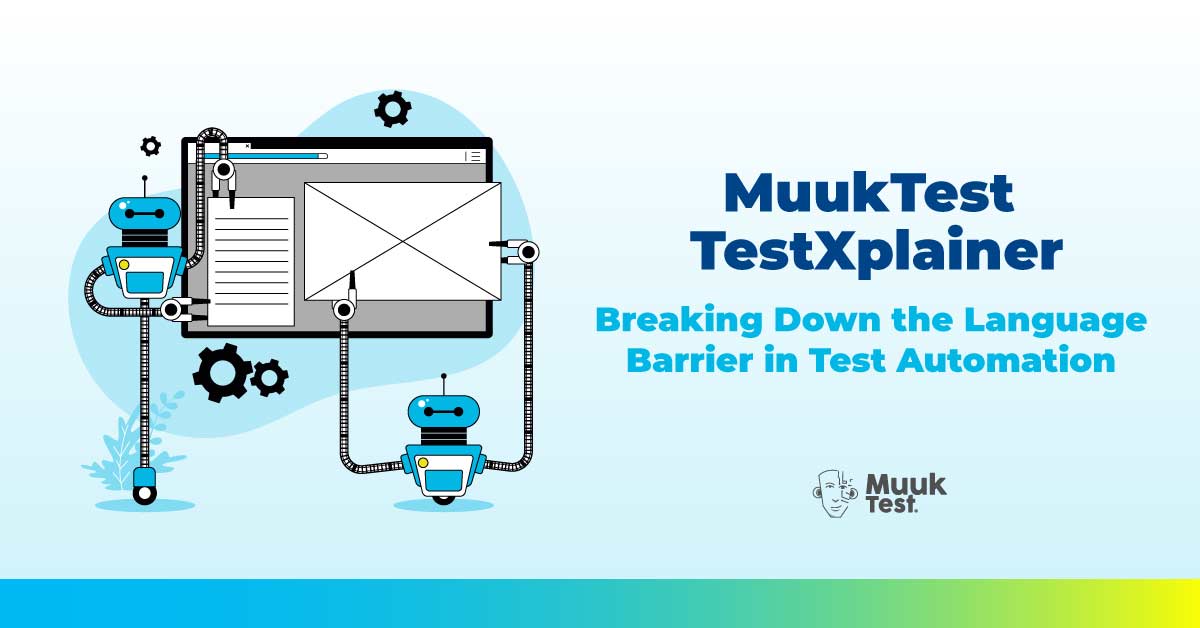- AI testing tools can handle the easy stuff well (happy paths, CRUD flows, basic navigation), but that’s just a fraction of what real users do.
- 80% test coverage doesn’t mean 80% risk coverage. Most bugs hide in the 20% of edge cases, integrations, and complex logic that AI tools don’t touch.
- Shallow coverage creates costly blind spots. From production bugs to wasted engineering time and customer churn, the risks grow fast when coverage lacks depth.
- You still need humans behind the tools. AI can scale testing, but only QA expertise can guide it toward what’s risky, not just what’s easy.
This post is part of a 4-part series on The Real ROI of AI Testing Tools - From Illusion to Impact:
- Why DIY AI Testing Tools Only Cover the Easy 80% ← You're here
- Why DIY AI Testing Tools on their own Struggle with the Hard 20% - Publishing Dec 2, 2025
- How CTOs Can Maximize ROI from AI Testing Tools - Dec 9, 2025
- MuukTest’s Hybrid QA Model: AI Agents + Expert Oversight - Dec 16, 2025

When DIY AI Testing Looks Perfect — Until It Fails
Imagine this: your engineering team just bought a yearly license for a new AI testing tool. Setup takes time, some dev hours here, some config headaches there, but once it’s running, you’re hoping to finally stop worrying about those pesky regression bugs that keep coming back.
Finally, the setup is complete. Within days, the tool starts generating hundreds of test cases. Login? Covered. Basic purchase flow? Covered. The QA dashboard glows green as 80% of tests are automated and passing. The team celebrates: fewer manual tests, faster cycles, higher “coverage.” It feels like a dream come true. In meetings, the engineering manager confidently reports that “the new AI tool has our QA under control.” The push to production is swift and backed by what appears to be a safety net of auto-generated tests.
Then reality hits. A week later, a critical bug sneaks into production… an edge-case scenario that none of those tests caught. Users encounter a nasty error: an integration with the payment API fails under certain conditions. The team scrambles. How did this slip through if 80% of our test cases are automated? The initial thrill of having so much done by AI turns into a sinking feeling. You realize your new AI testing tool created a false sense of security.
The story is very common: teams get false confidence from that “easy 80%” of tests, only to discover gaps in the 20% that really matter, the hard way. It’s a classic case of the Pareto Principle in testing: most effort gets automated, but most of the risk remains untouched.
Before the gaps start to show, AI testing tools can feel like magic. Tests appear almost instantly, you feel like your coverage is finally growing, and your team starts to believe that QA is finally under control.
And it’s not just a feeling. According to Capgemini’s 2024 World Quality Report, over half of organizations using AI in QA have already seen faster release cycles (57%) and reduced testing costs (54%).
For the typical, predictable scenarios, AI really does help. It delivers speed, coverage, and relief from repetitive test writing. Here are the types of tests where the AI testing platforms really shine in test automation:
- Happy path flows: These are the default, ideal user journeys (a customer logging in, adding one item to their cart, and checking out successfully. The steps are usually linear, repeatable, and align with the typical behavior defined in the specs, making it very easy for the AI to excel here.
- CRUD operations (Create, Read, Update, Delete): Actions like creating a new user, updating a profile, or deleting a comment follow consistent backend patterns. AI tools can quickly recognize these operations and generate effective coverage with minimal human tuning.
- Basic form submissions: As long as the data is valid and the behavior follows expected validation rules, the AI can generate reliable coverage.
- Standard UI navigation: Navigation flows (clicking buttons, opening menus, switching tabs) are easily captured by AI tools, especially when element locators are static and consistent.
- Straightforward user flows that mirror product requirements or API specs: If the product manager says, “the user clicks here, then sees this,” AI can follow that logic and convert it into test steps. For example: navigating to a dashboard after login and verifying widgets are loaded.
- Predictable sequences with no conditional logic or complex branching: AI is strong at linear logic (such as onboarding wizards) where every user goes through the same steps. But once decisions are involved (“if user has X, show screen Y”), AI’s reliability starts to drop without additional prompting.
- Tests based on static elements and fixed UI structures: When your UI layout is stable (like a consistent login modal or a static landing page) AI tools can confidently locate and interact with elements.
- Repetitive or routine checks that require little contextual understanding: Tasks like checking that every product in a list loads with a price and title are perfect for AI. These tests are highly automatable when the structure is consistent across items.
The common theme is that AI excels at handling the high-volume, routine tests. All the predictable, repeatable flows that don’t ask too many questions can usually be handled very well by AI. All the stuff your users should do when everything goes right. The challenge is knowing where that magic ends.
Who Benefits Most From This Type of AI-generated testing?
Products with structured UIs and predictable flows are prime candidates for AI-driven testing. Think of systems like eCommerce platforms, internal tools, finance dashboards, or patient portals, where users move through clear, rules-based workflows.
If your app behaves consistently and has minimal branching or edge-case complexity, AI can generate test coverage fast. But here’s the catch: even in these environments, AI alone isn’t enough.
To get real value, you still need people behind the tools, engineers, and QA pros who can fine-tune test logic, guide the AI when it misses context, and craft the edge cases that AI tools tend to skip. Without that human insight, your automation might appear complete on the surface while quietly missing the most meaningful risks beneath the surface.
The Illusion of Coverage: 80% Automation ≠ 80% Risk Reduction
When an AI testing tool generates hundreds of tests in minutes (work that used to take your team hours), it’s easy to feel like QA is finally under control. Faster cycles. Fewer regressions. More coverage. What’s not to love?
But here’s the reality: automating 80% of your app’s test cases does not equal 80% risk reduction. That number can be dangerously misleading. You can have thousands of passing tests and still ship critical bugs.
Why? Because coverage, when not thoughtfully designed, becomes a vanity metric. Test quantity isn’t the same as test quality.
Take one real-world example: a payments company used an AI testing platform to generate 847 tests, achieving close to 100% test coverage. Everything passed. But after release, 12% of real transactions started failing. The bug turned out to be a subtle race condition triggered only when a user had two saved payment methods and clicked “Pay” within three seconds of page load. Over 40,000 customers were affected in a single weekend. The AI had created a wide suite of happy paths, errors, and even accessibility checks, but missed the one scenario that actually broke.
Believing they had close to a 100% test coverage gave them an illusion of safety while missing the bug that mattered. Shallow test coverage gives the illusion of safety while hiding blind spots in the workflows that matter most. Teams see a high coverage number and assume the risk is handled. But if your test coverage is all happy paths, you're not really testing your product; you're confirming that best-case scenarios still work.
Focusing solely on the easy 80% test automation is like shining a flashlight on the middle of the room and ignoring the corners. That’s where bugs thrive. And that’s where customers lose trust.
To avoid this trap, teams need to look beyond test volume and aim for deep, risk-based testing. The hard 20% where critical bugs actually live. That means covering edge cases, unexpected inputs, timing issues, multi-step flows, and brittle integrations.
Most DIY AI testing tools don’t go there. They chase what’s easy to automate and overlook critical tests. And without experienced QA minds guiding and shaping those tests, what you’re left with is shallow automation dressed up as confidence.
Common Technical Problems Where DIY AI Testing Fails
What kinds of problems hide in that hard 20%? These are the scenarios DIY AI tools typically can’t handle well:
- Integration and API issues
- Edge cases and error handling
- Multi-step user journeys
- Conditional logic and context-specific behavior
- Timing and concurrency issues
The kinds of scenarios that don’t follow a script but still break things in production. These are the blind spots that AI-generated tests miss by design, and they’re the ones that protect real product reliability.
We’ll dive deeper into this in our next article: Why AI Testing Tools Fail on the Hard 20% of Test Cases, where we unpack what makes these tests so complex and why real quality still needs human-guided, risk-aware testing.
Business Risks of Blindly Trusting AI Test Tools
Relying on AI to handle all your testing may feel efficient until it quietly becomes expensive. While AI test generation can reduce manual effort, blindly trusting it without strategy or oversight creates risks that go beyond bugs. It can affect customer trust, team velocity, and even bottom-line performance.
Here are the business-level risks that often go unnoticed until it’s too late:
- False sense of quality leads to missed bugs in production
High test coverage numbers may look impressive, but if the coverage is shallow, critical issues still slip through, especially in edge cases, integrations, and user-specific logic.
- Customer trust erodes when critical flows break
If checkout, onboarding, or payment flows fail because of untested edge scenarios, users don’t care that “the tests passed.” They churn.
- Wasted engineering time on flakiness and false positives
Without focused QA guidance, AI-generated tests can become noisy and brittle. Teams waste hours babysitting test runs instead of building value.
- Risky product decisions based on vanity metrics
When test counts and coverage numbers are inflated but not risk-informed, leadership may push features to production, assuming they’re safe when they’re not.
- Stalled test automation ROI
The test automation plateau hits fast when shallow tests dominate. Maintenance overhead increases, while the tests catch fewer meaningful issues over time.
- Delayed incident response and firefighting mode
Bugs that make it to production due to blind spots in test logic often trigger late-night rollbacks, damage control, and high-severity incidents.
Without the proper human judgment behind it, even the smartest testing tools can give you a false sense of security.
AI Is Powerful, But It’s Not a Substitute for Real QA Strategy
AI testing tools are incredibly effective at automating the easy, repeatable parts of your app and that’s a win worth celebrating. But speed and volume alone don’t equal safety. When coverage becomes shallow, brittle, or blindly trusted, you risk trading fast results for fragile quality.
The illusion of full coverage, the cost of flaky tests, and the blind spots in edge cases aren’t just technical issues: they’re business risks. Real product confidence doesn’t come from dashboards full of green checks. It comes from thoughtful, risk-based testing guided by human insight.
And that brings us to the 20% of testing that actually protects your product. In the following article of this series, we’ll dive deep into the hard 20%, those scenarios that make or break real-world reliability. We’ll explore why AI struggles with intent, logic, and user behavior; how flakiness spirals as complexity increases; and why truly high-risk testing still demands human guidance.
If your team is already feeling the cracks in AI test coverage or you want to make sure you don’t hit the test automation plateau, this is the one you won’t want to miss: Why AI Testing Tools Fail on the Hard 20% of Test Cases.

Frequently Asked Questions
What is the "easy 80%" in AI test automation?
The “easy 80%” refers to the basic, repeatable test cases that AI testing tools can handle well, such as login flows, CRUD operations, and standard form submissions. These are predictable scenarios with little logic complexity or variability, making them easy to automate.
Does 80% test coverage from AI tools mean 80% less risk?
No. High test coverage numbers can create a false sense of security. AI tools often generate shallow tests focused on happy paths, which miss edge cases, integrations, and timing issues, where most critical bugs actually occur.
What are the risks of relying too much on AI-generated tests?
Over-reliance on AI testing can lead to missed production bugs, customer churn, wasted engineering time due to flaky tests, and poor business decisions based on vanity metrics like inflated coverage percentages.
Which types of apps benefit most from AI testing tools?
Apps with static UIs and predictable workflows, such as eCommerce platforms, CRMs, internal admin tools, and simple dashboards, benefit most. However, even these apps still require expert QA oversight to fill in gaps that AI testing platforms can’t handle.
Can AI testing tools replace manual QA entirely?
No. While AI tools can accelerate test creation and maintenance, they lack the judgment to test risky scenarios, complex logic, or unpredictable user behavior. Human QA experts are still essential for meaningful, risk-aware testing.


.png)

%20(1).png?width=150&height=69&name=MuukTest-logo---light-background%20(3)%20(1).png)

.png)
.png)
